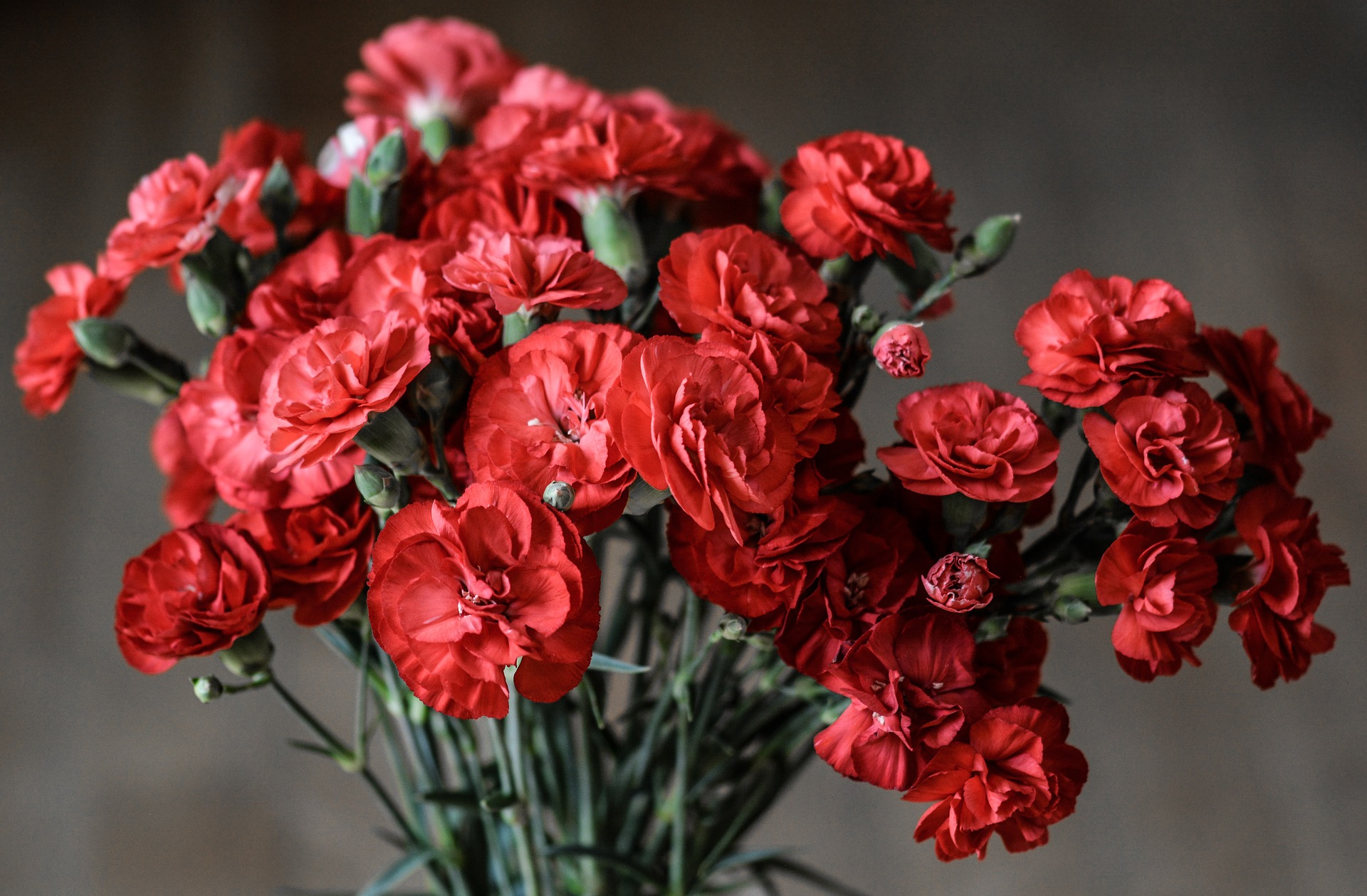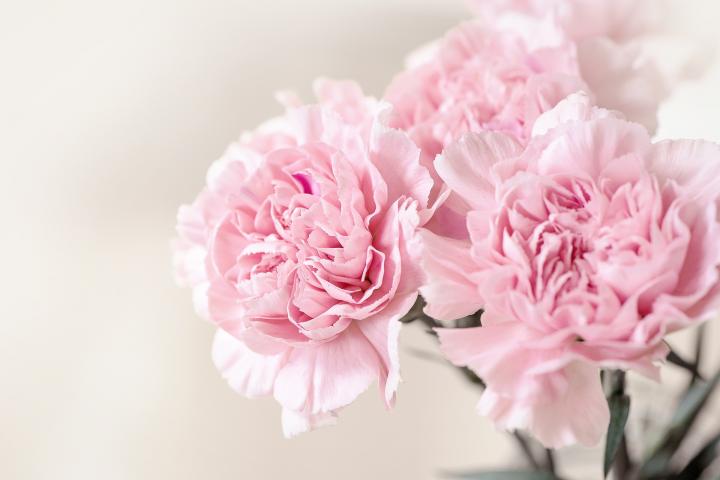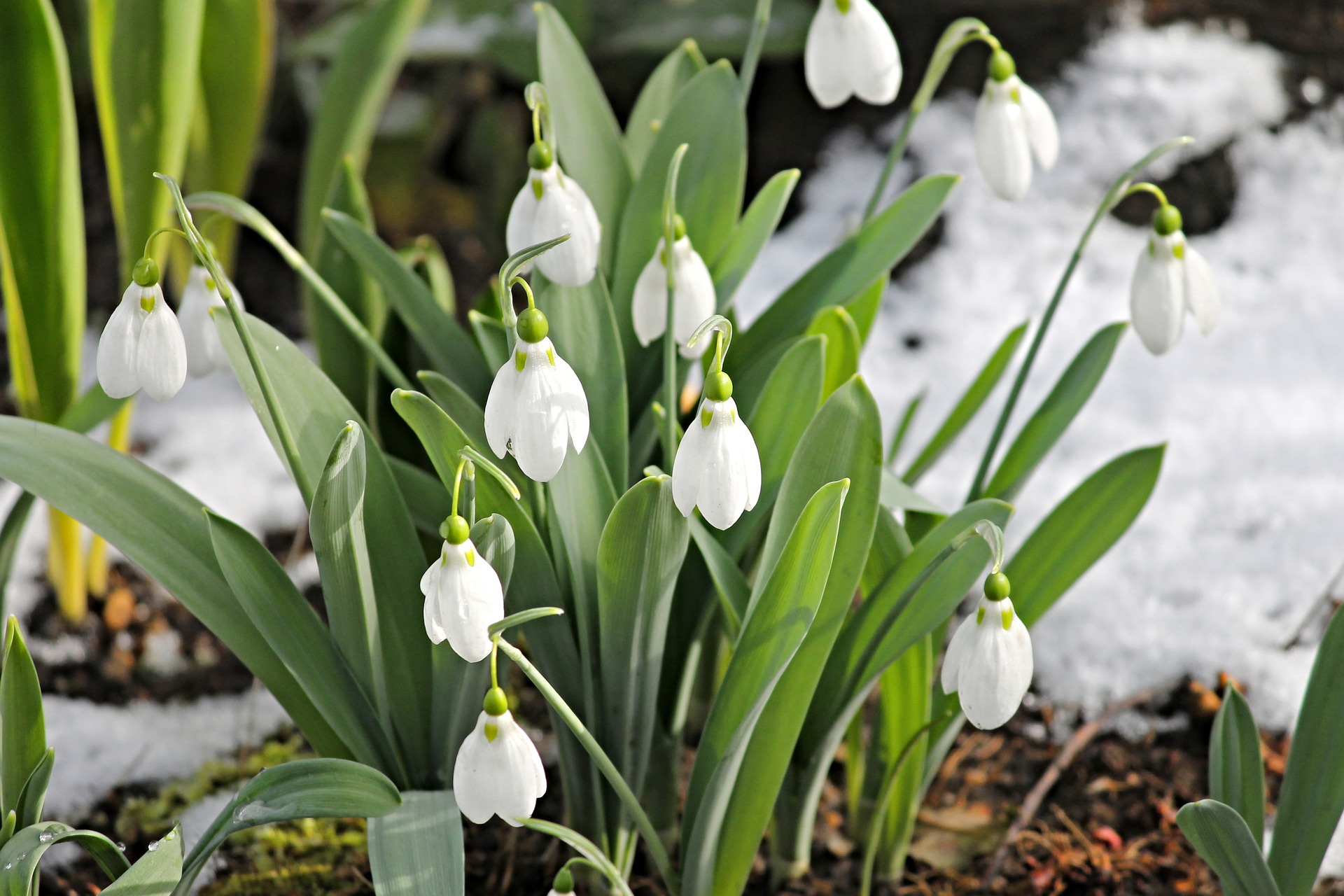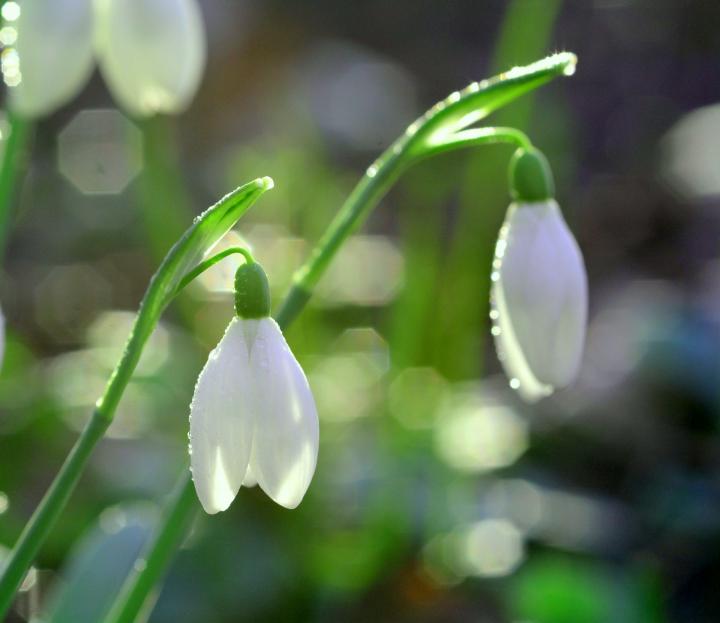Are you a January baby? People born in the month of January have two birth flowers—the carnation and snowdrop. Whether they’re your “birth” flowers or not, learn more about the history, meaning, and symbolism of these colorful flowers that are sure to lift your spirits during these cold winter months.
What Are the January Birth Flowers?
The traditional January birth flowers are the carnation and the snowdrop.

The Carnation
Native to the Mediterranean area, the carnation (Dianthus caryophyllus) is a widely cultivated fringe-petaled flower with a spicy fragrance. It was first imported to the United States in the 1850s, and within two decades, more than 50 varieties had been made available. It has long been a staple in the flower industry—especially for Mother’s Day and Valentine’s Day—thanks to its meanings of love and remembrance. They are also the state flower of Ohio.
Carnation History
Translated from Greek, carnation is often referred to as “flower of the gods.” It grew in the wild on the hillsides of Greece and is said to have been named by Greek botanist Theophrastus. The carnation’s history dates back to when it was used in garlands, art, and decor in ancient Greece and Roman times.
At one time, the carnation was used to treat fevers in Europe. In the Elizabethan era, it was used to spice wine and ale as a substitute for the more expensive clove. An essential oil can be extracted from a carnation’s flower and used for aromatherapy and perfumes. It is traditionally prescribed in European herbal medicine to treat coronary and nervous disorders.
In the Netherlands, a white carnation is worn in remembrance of veterans and the resistance in World War II. Bright red carnations represent the 1970s military and civil coup in Portugal, often called the Revolution of the Carnations. Red carnations also symbolize socialism and the labor movements and have been worn on International Workers’ Day (May 1).
Carnation Meanings and Symbolism
In early times, carnations were predominantly pale pink and peach, but over the years, the availability of colors has grown to include red, yellow, white, orange, purple, and green, as well as bi-colors and frosted varieties. As with roses, different-colored carnations convey different meanings, as shown below.
Carnation Colors & Meanings| Color | Meaning |
|---|
| Light Red | Admiration |
|---|
| Dark Red | Deep Love |
|---|
| White | Innocence, Pure Love, Remembrance |
|---|
| Pink | Affection, A Mother’s Love |
|---|
| Purple | Capriciousness |
|---|
| Yellow | Disappointment, Rejection |
|---|
| Striped (any color) | Regret |
|---|
According to Christian legend, the first pink carnation on Earth grew from Mary’s tears when she wept for Jesus as he carried his cross. Therefore, a pink carnation often symbolizes a mother’s unyielding love.

Carnations in the Garden
There are two main groups of carnations: border or garden carnations and perpetual flowering carnations.
- Border/garden carnations grow 1 to 2 ½ feet tall and come in a wide range of colors. The flowers, roughly 2 inches in diameter, grow from wiry, stiff stems.
- Perpetual flowering carnations are taller—up to 3 feet in height—stouter and produce larger flowers.
- Miniature and spray varieties are also grown for florist use.
An herbaceous perennial, carnations can also be grown as an annual. They prefer cooler summer climates and moist, well-drained, gritty soils high in organic matter.
Carnations are intolerant of high heat and might be a poor choice for a southern garden. They bloom in midsummer, preferring bright sun, but cool temperatures. One of a few flowers that can bloom in cool weather, assuming temperatures remain above freezing, carnations can add color to a garden border or a patio container.

The Snowdrop
Notably, the earliest garden flower to bloom, the snowdrop (Galanthus), emerges in late winter or early spring, sometimes when snow is still on the ground. It is one of our favorite spring ephemerals.
Snowdrop History
Although native to the cooler mountainous, wooded, and grassland regions of southern Europe and Asia Minor, snowdrops have since been naturalized in the United States.
Extract of the snowdrop was used by the ancient Greeks for its mind-altering effects. Used as a folk remedy for various ailments, the snowdrop is thought to have been brought to Europe by monks and midwives for medicinal use.
Snowdrop Meanings and Symbolism
The snowdrop’s genus name, Galanthus, is derived from the Greek words gala (milk) and anthos (flower), referencing the flower’s pure white appearance.
Snowdrops are used to express both sympathy and celebration. During happy times, it is thought to provide optimism and hope, but following a death or misfortune, it symbolizes compassion. Innocence is also linked to the snowdrop because of its color.
According to one Christian story, an angel turned snowflakes into snowdrops and gave them to Adam and Eve as a sign of hope after their banishment from the Garden of Eden.
Amongst pagans, the snowdrop is associated with the beginning of spring, as it is thought that the arrival of the first blooming flower signifies the end of winter.
A single snowdrop bloom brought inside was once believed to represent death, as it was traditionally known to grow in graveyards. Nowadays, this delicate flower—often one of the first to poke through the snow in late winter—signifies hope and beauty.

Snowdrops in the Garden
As small plants, snowdrops are best suited for areas near walks, pathways, or elevated gardens. They look best when at least three or four are planted together.
Grow snowdrops in an area that receives full sun during the spring when the foliage is apparent. Plant dry bulbs early in the fall but after the soil has cooled. They prefer rich, well-drained soil.
Fertilize in early spring when shoots first appear or after blooming, and allow the foliage to die back naturally after the spring bloom.
Woodland settings are also ideal for snowdrops. They will return each year if winter low temperatures reach at least 20°F but no colder than -30°F.
Snowdrop seeds, surrounded by an oil-rich structure, are attractive to ants, which help disperse seeds across landscapes.
Learn More













